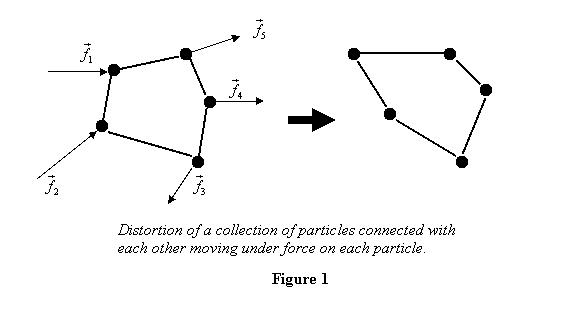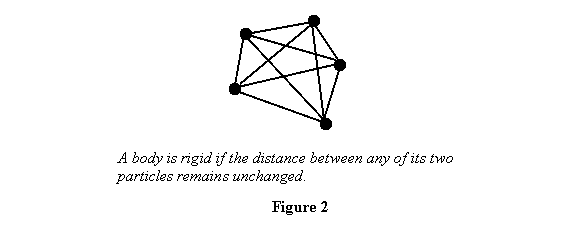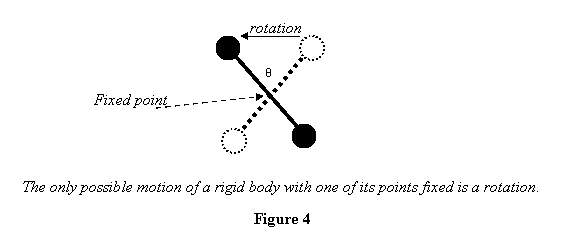Lecture
18
Rotational dynamics I: Angular
momentum
So far we have applied Newton's laws to point particles
and the CM motion for a collection of particles. We are
now going to look at what happens beyond the motion of
the CM, which is described by the equation

Let us see what else could happen to a body made up of
a collection of particles where forces are applied at
each point (figure 1). The particles are connected with
flexible attachments shown as lines.

In the figure above, although the CM moves with  ,
the body itself could deform and change its orientation.
Thus the distances between the particles and the angles
between lines joining them would change. This is the
most general motion that could take place. In the next
few lectures we want to focus only one of the effects
of the force applied. We are going to assume that a body
only changes its orientation but does not deform. This
is achieved by keeping the distance between any two particles
of the body unchanged. Such a body is known as a rigid
body . Thus in the example above, if we connect
all the particles with each other by rods of fixed length,
the body will become rigid. This is shown in figure 2. ,
the body itself could deform and change its orientation.
Thus the distances between the particles and the angles
between lines joining them would change. This is the
most general motion that could take place. In the next
few lectures we want to focus only one of the effects
of the force applied. We are going to assume that a body
only changes its orientation but does not deform. This
is achieved by keeping the distance between any two particles
of the body unchanged. Such a body is known as a rigid
body . Thus in the example above, if we connect
all the particles with each other by rods of fixed length,
the body will become rigid. This is shown in figure 2.

The only possible motion of such a body is a translation
plus a change in its orientation. The simplest example
of a rigid body is two masses attached at the ends of
a rod of fixed length. On the other hand, a tin-can partially
filled with sand is not a rigid body since the distance
between two particles keeps on changing with the motion
of the can.
As stated above, the most general motion of a rigid body
is its translation plus its change of orientation. The
latter is equivalent to a rotation about a point. The
beauty of this decomposition is that to get the final
position of the body, we can translate any point in the
body and then rotate the body about that point. Irrespective
of which point we choose, the sense and the angle of
rotation is always the same. Usually this point is taken
to be the CM for reasons that will become clear later
lectures. This general motion is shown below in figure
3, giving two possible ways of translating and rotating
the body.

You see that in figure 3 the rigid body has translated
and also rotated. On the other hand, if we keep one of
the points on the body fixed the only thing the body
can do is to change its orientation (see figure 4). Thus
with a point fixed, the only possible motion of a rigid
body is a rotation.

A question that arises now is how many variables do we
need to specify the general motion of a rigid body. It
requires three variables - x, y and z coordinates of
the point that is translated - to describe the translation,
and three more - angle of rotation about each axis -
to represent the rotation. You can see that in general
a rigid body would require six variables to describe
its motion. However, if one of its points is fixed, three
variables are sufficient to specify its rotation. So
we conclude a rigid body needs six parameters to
describe its motion.
|